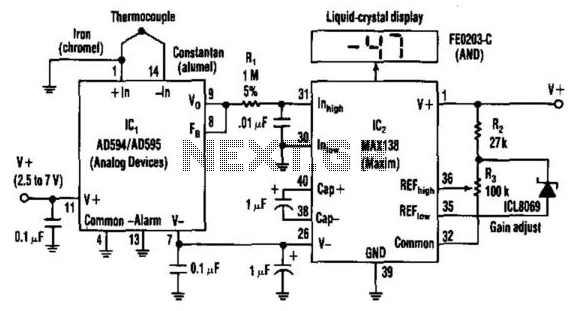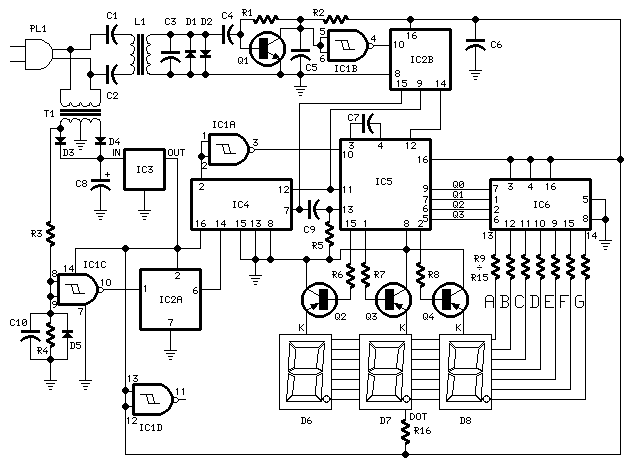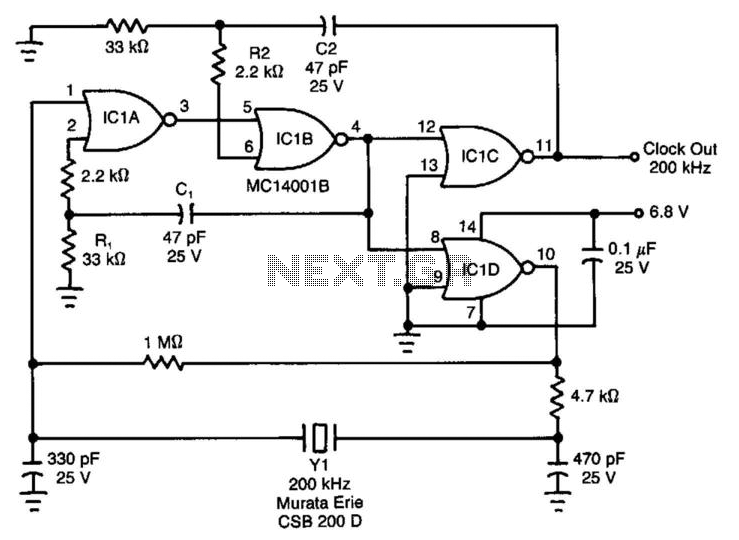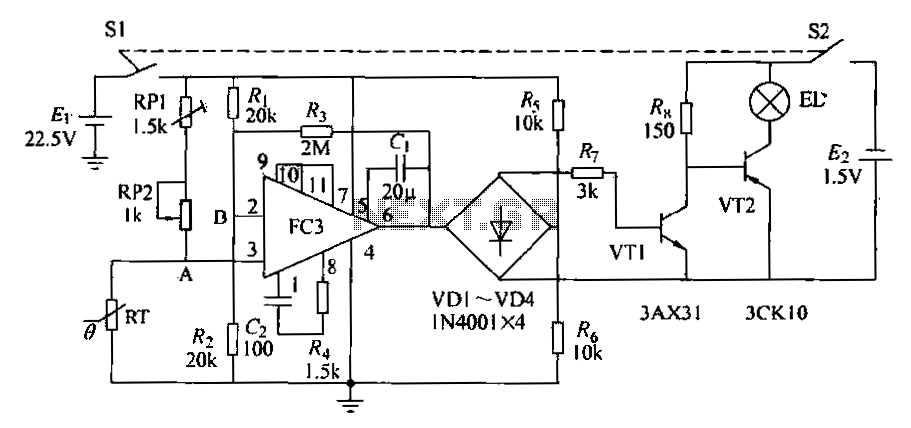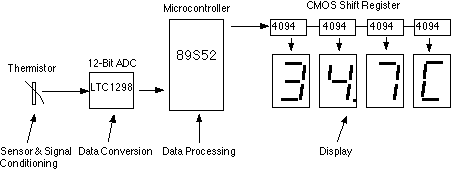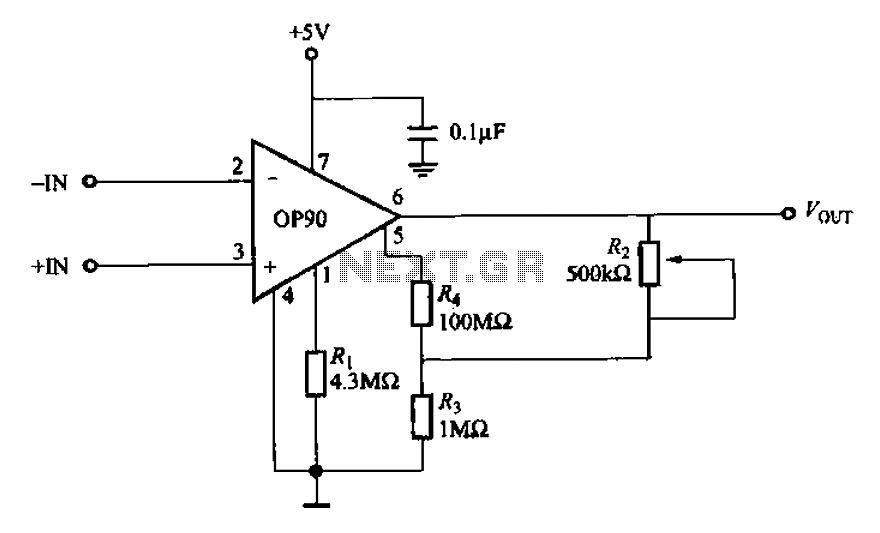
Micropower thermometer
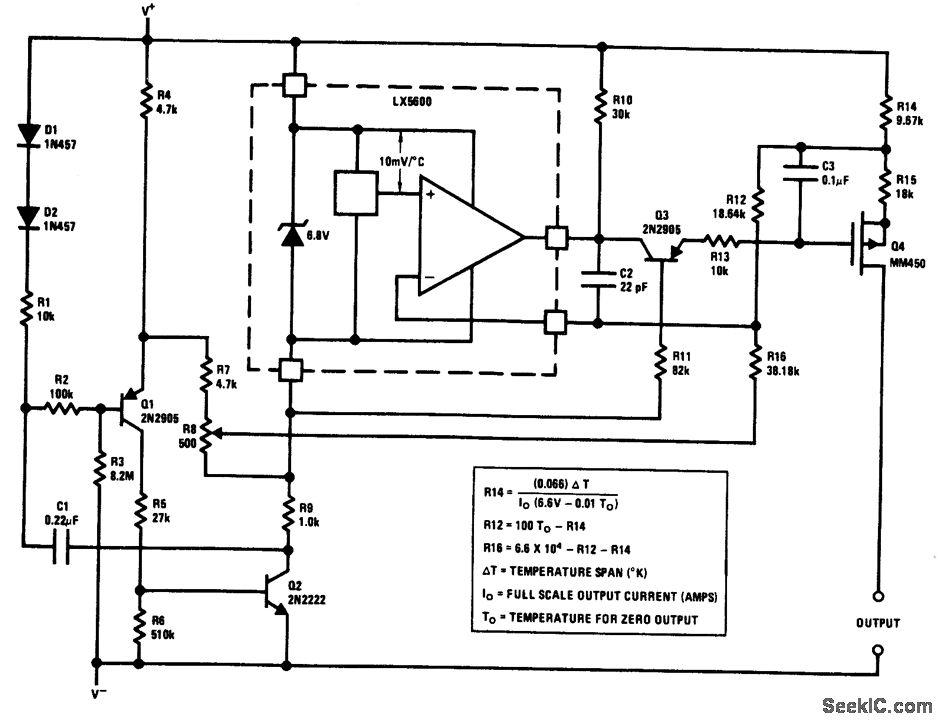
The output of this circuit is a current that is proportional to temperature, which can be utilized to drive a meter for direct readout. Alternatively, a resistor or operational amplifier can be employed to obtain a voltage output. The circuit operates at a low duty cycle to minimize power consumption, achieving a duty cycle of approximately 0.2% with a one-second sample rate. This results in an average current drain of about 25 µA, in addition to the output current. The circuit functions with a supply voltage ranging from 8.0 to 12.0 V. A small 8.4 V mercury battery can provide an operational life of around one year. Resistor R8 is used for trimming the circuit to correct for Zener tolerance, temperature errors in the sensor, and resistor tolerance. With the specified component values, a 0 to 50 µA output is produced for a temperature change from +50 to +100 °F. Alternative output ranges can be selected using the equations provided in the circuit diagram. The current-source output enables accurate driving of long lines without loss of precision.
This circuit is designed to provide a reliable and efficient method for temperature measurement and monitoring. The use of a current output rather than a voltage output is particularly beneficial in applications where long transmission lines are involved, as it minimizes the effects of resistance and noise that can affect voltage signals. The low duty cycle operation significantly reduces power consumption, making this circuit suitable for battery-powered applications, such as in remote sensing or portable devices.
The temperature sensor used in this circuit should have a linear response to temperature changes to ensure that the output current accurately reflects the temperature being measured. The choice of operational amplifier or resistor for converting the current to a voltage output should be based on the specific requirements of the application, including the desired output range and the input impedance of any subsequent circuitry.
The trimming resistor R8 plays a crucial role in ensuring the accuracy of the circuit by compensating for variations in component tolerances. This adjustment allows for precise calibration of the output current in response to temperature changes. The specified output range of 0 to 50 µA for a temperature change of +50 to +100 °F can be adjusted by selecting appropriate resistor values in the circuit, as indicated in the accompanying equations.
Overall, this circuit is an effective solution for applications requiring precise temperature measurement with minimal power consumption, making it suitable for a wide range of electronic and industrial applications.The output of this circuit is a current proportional to temperature, which can be used to drive a meter for a direct readout. Alternatively, a resistor or op amp can be used to get a voltage output. The circuit is pulsed at a low duty cycle to reduce power consumption. With the component shown, the duty cycle is about 0. 2% with a one-se cond sample rate. This gives an average current drain of about 25 A, plus the output current. The circuit will operate with a supply of 8. 0 to 12. 0 V. A small 8. 4-V mercury battery can provide an operating life of about one year. R8 is used to trim the circuit, correct for Zener tolerance, temperature error in the sensor, and resistor tolerance. With the values shown, a 0- to 50- A output is obtained for a +50 to + 100 °F temperature change. Other ranges can be selected using the equations shown in the box on the circuit diagram. The current-source output allows long lines to be driven with no loss of accuracy. National Semiconductor Linear Applications Habdbook, 1991, p. 1229. 🔗 External reference
This circuit is designed to provide a reliable and efficient method for temperature measurement and monitoring. The use of a current output rather than a voltage output is particularly beneficial in applications where long transmission lines are involved, as it minimizes the effects of resistance and noise that can affect voltage signals. The low duty cycle operation significantly reduces power consumption, making this circuit suitable for battery-powered applications, such as in remote sensing or portable devices.
The temperature sensor used in this circuit should have a linear response to temperature changes to ensure that the output current accurately reflects the temperature being measured. The choice of operational amplifier or resistor for converting the current to a voltage output should be based on the specific requirements of the application, including the desired output range and the input impedance of any subsequent circuitry.
The trimming resistor R8 plays a crucial role in ensuring the accuracy of the circuit by compensating for variations in component tolerances. This adjustment allows for precise calibration of the output current in response to temperature changes. The specified output range of 0 to 50 µA for a temperature change of +50 to +100 °F can be adjusted by selecting appropriate resistor values in the circuit, as indicated in the accompanying equations.
Overall, this circuit is an effective solution for applications requiring precise temperature measurement with minimal power consumption, making it suitable for a wide range of electronic and industrial applications.The output of this circuit is a current proportional to temperature, which can be used to drive a meter for a direct readout. Alternatively, a resistor or op amp can be used to get a voltage output. The circuit is pulsed at a low duty cycle to reduce power consumption. With the component shown, the duty cycle is about 0. 2% with a one-se cond sample rate. This gives an average current drain of about 25 A, plus the output current. The circuit will operate with a supply of 8. 0 to 12. 0 V. A small 8. 4-V mercury battery can provide an operating life of about one year. R8 is used to trim the circuit, correct for Zener tolerance, temperature error in the sensor, and resistor tolerance. With the values shown, a 0- to 50- A output is obtained for a +50 to + 100 °F temperature change. Other ranges can be selected using the equations shown in the box on the circuit diagram. The current-source output allows long lines to be driven with no loss of accuracy. National Semiconductor Linear Applications Habdbook, 1991, p. 1229. 🔗 External reference
